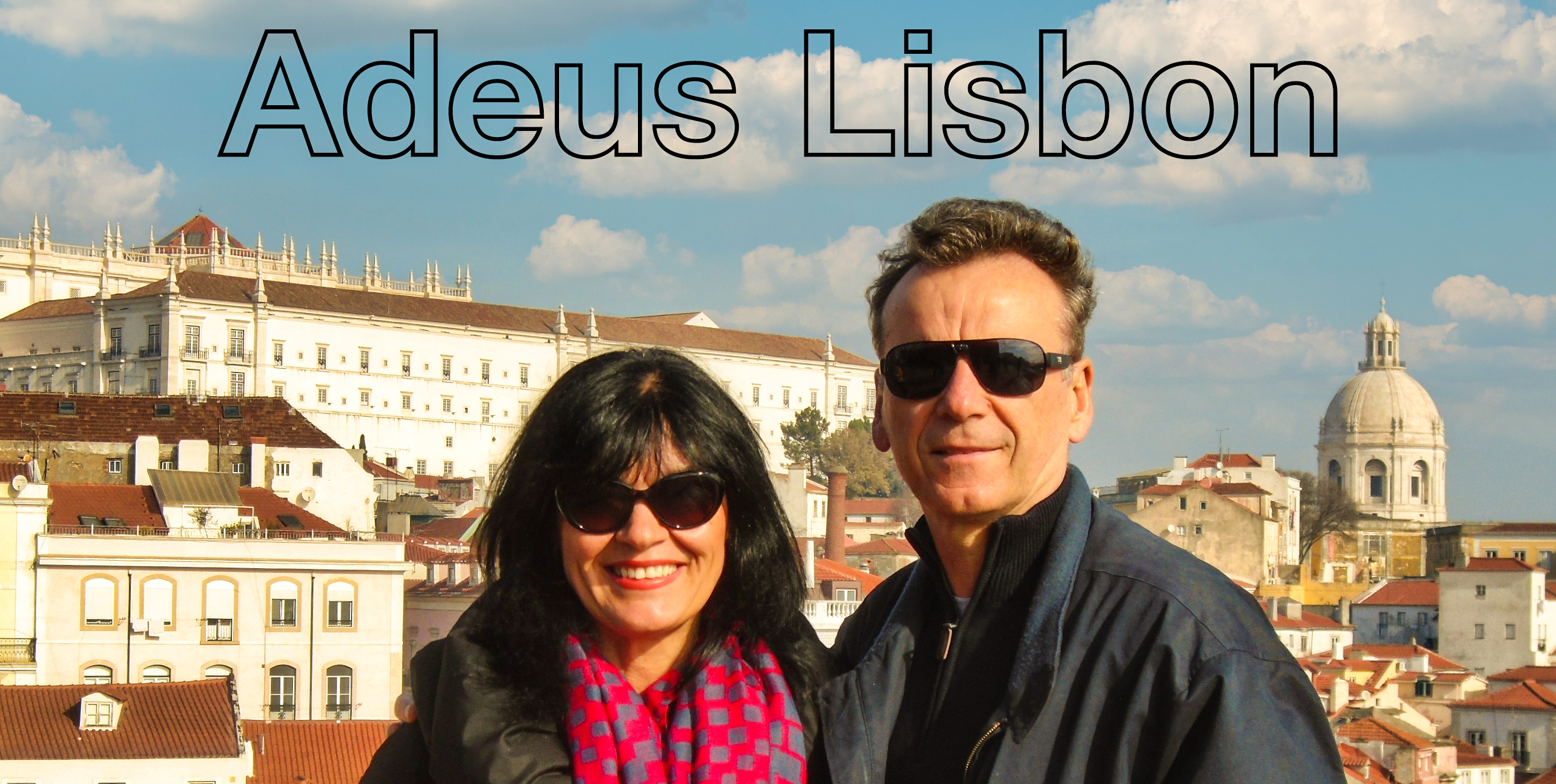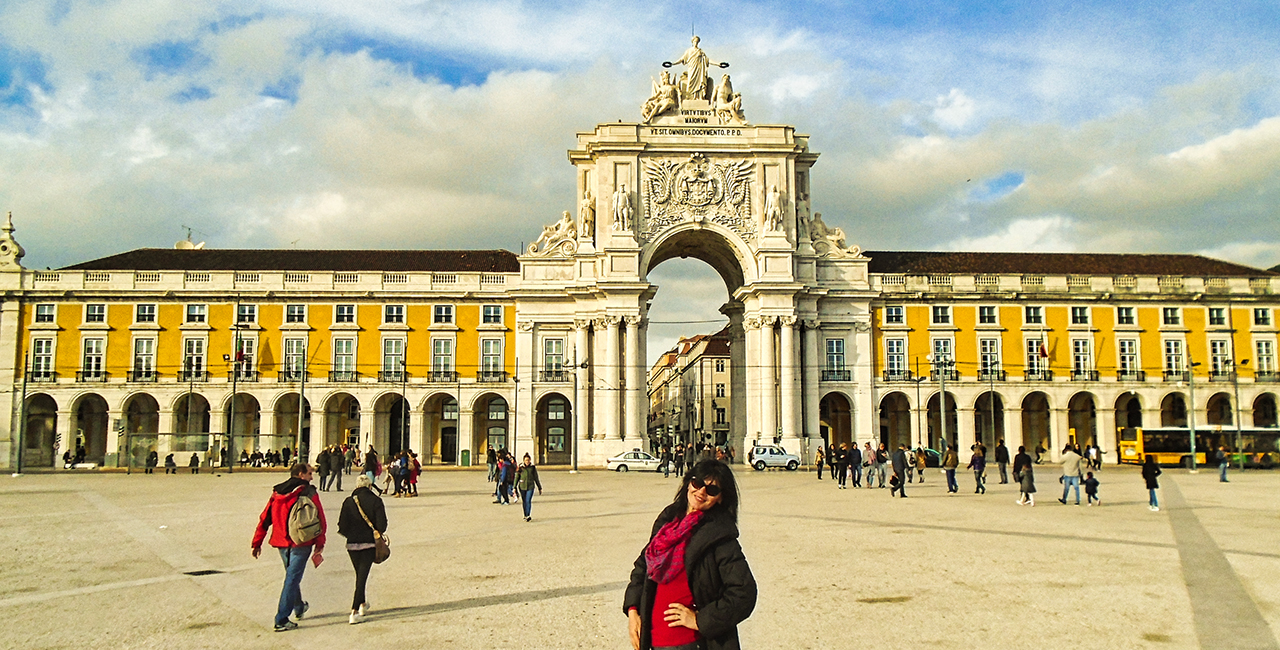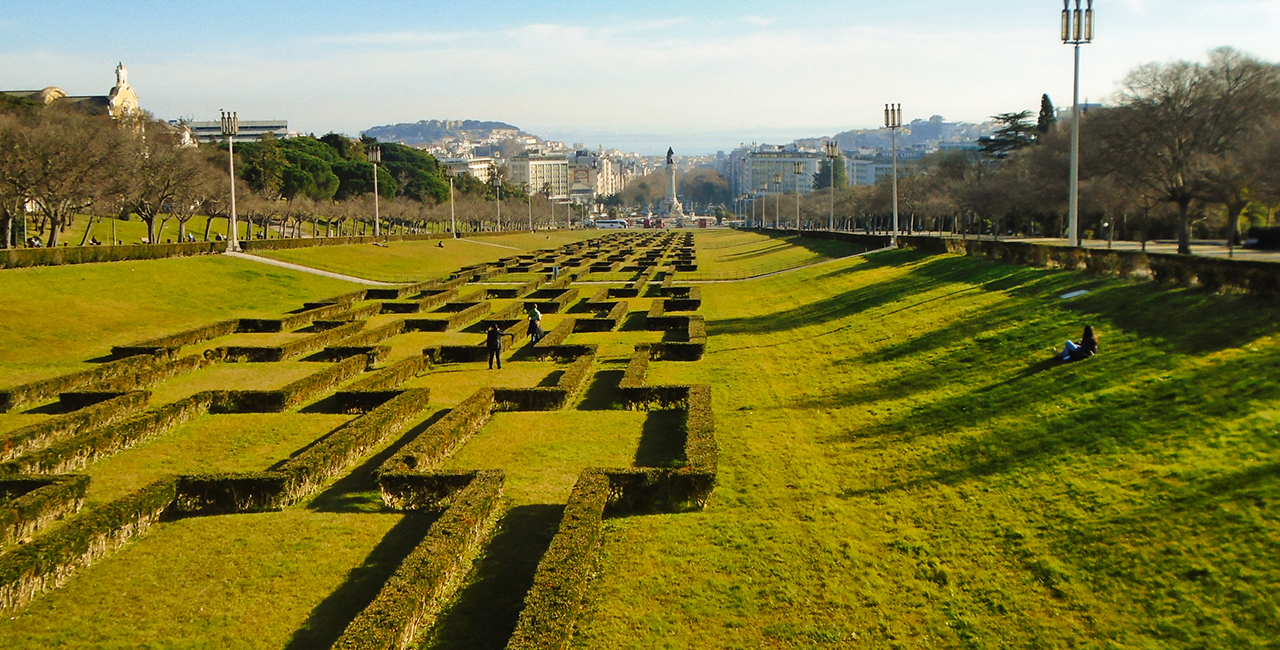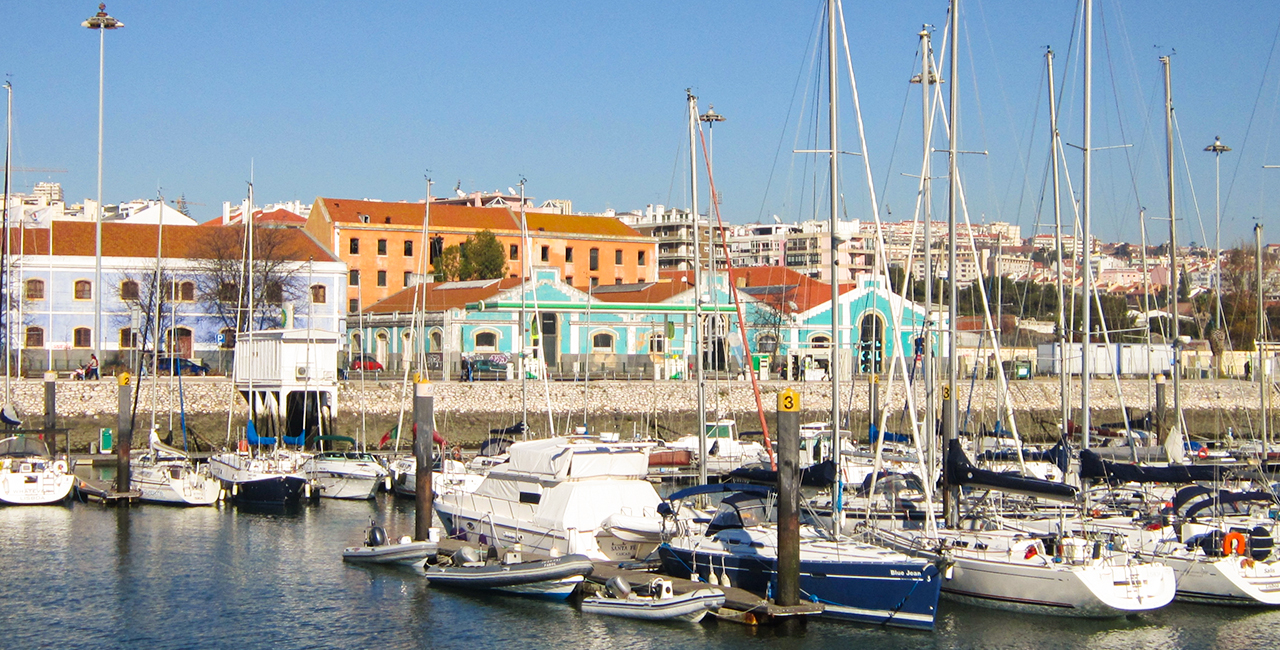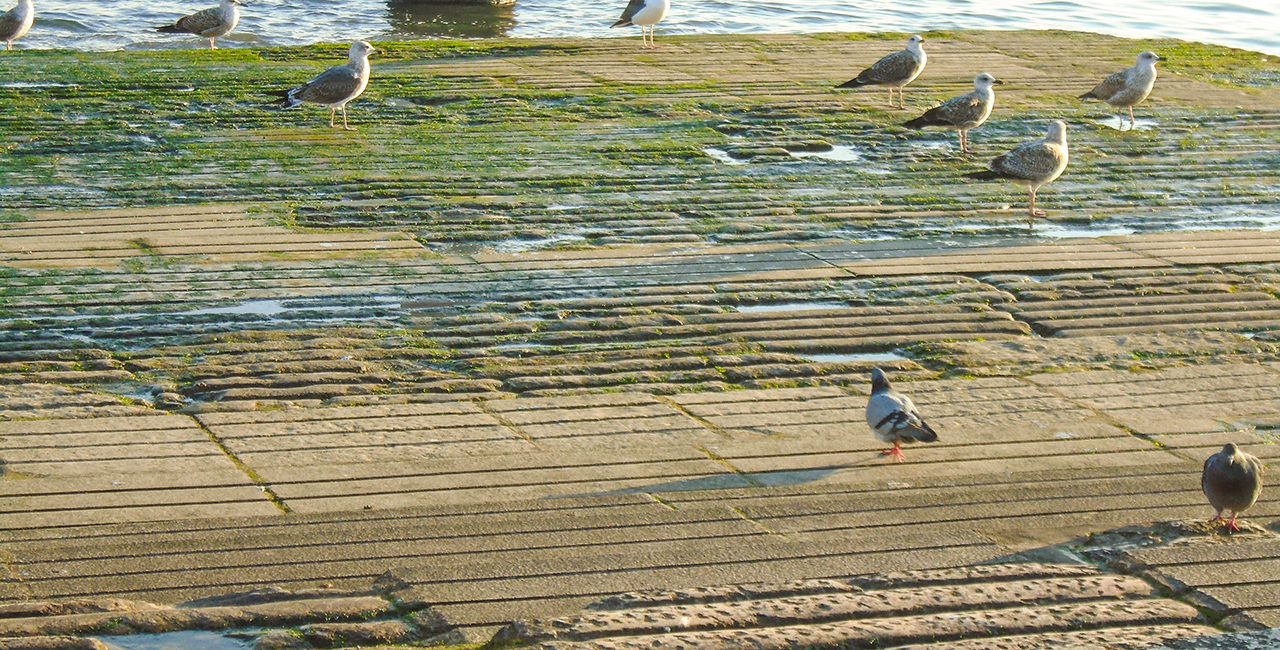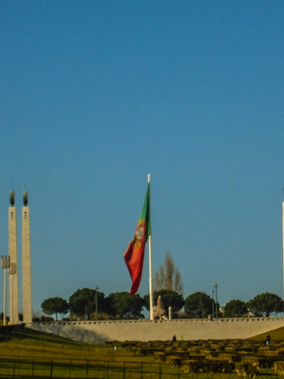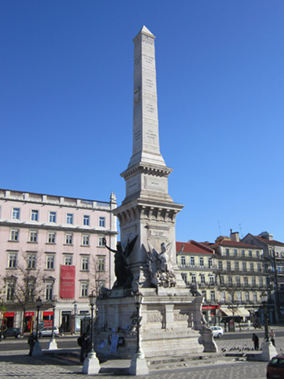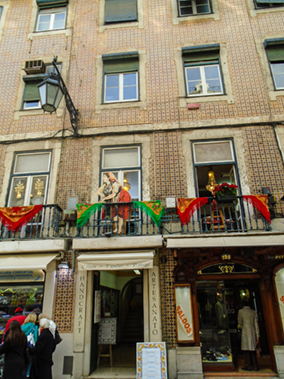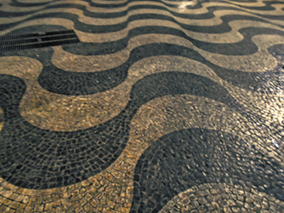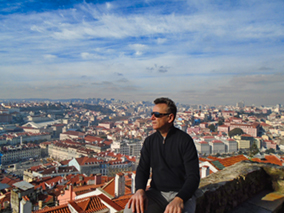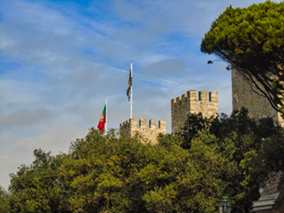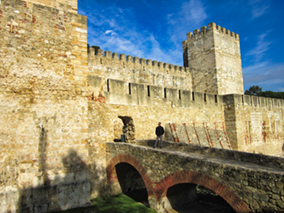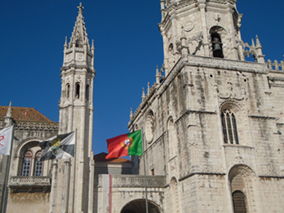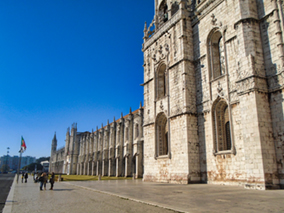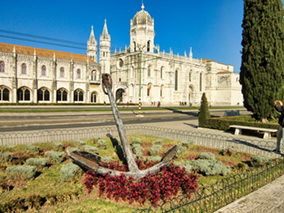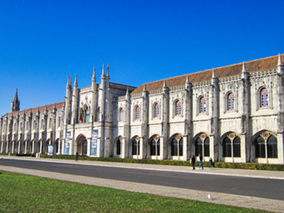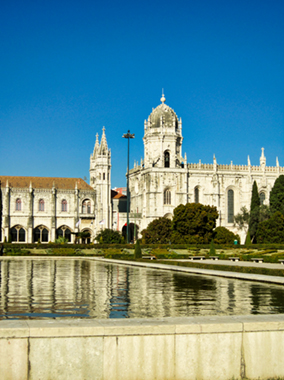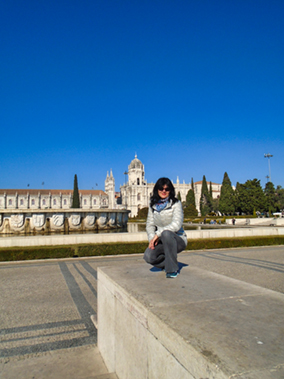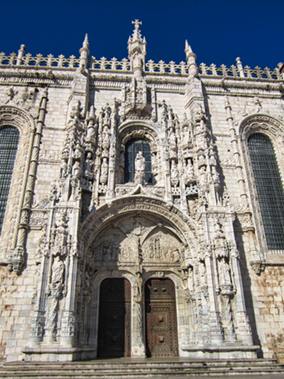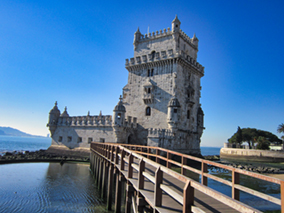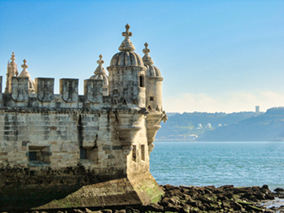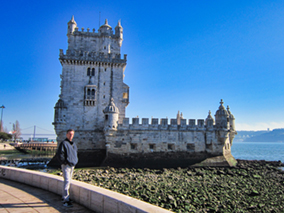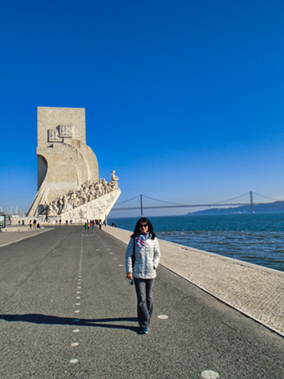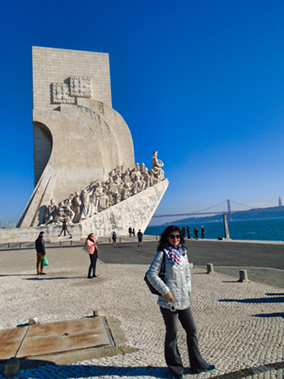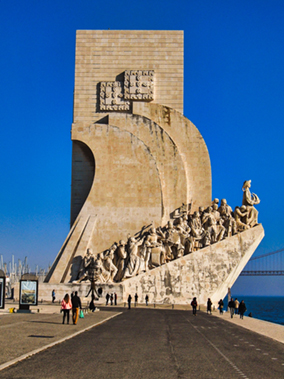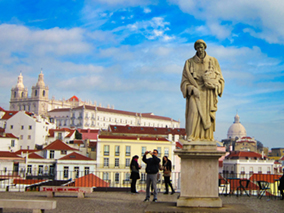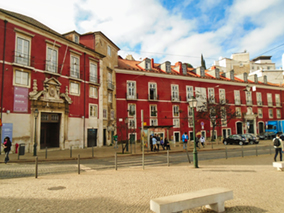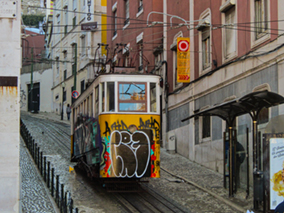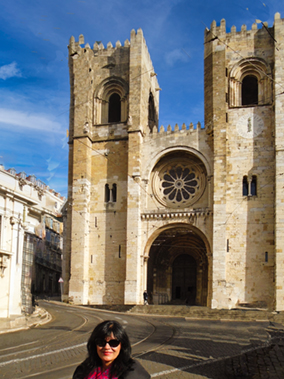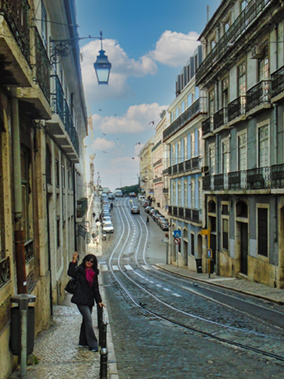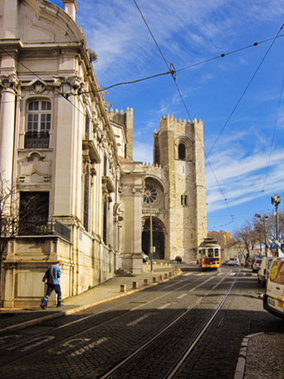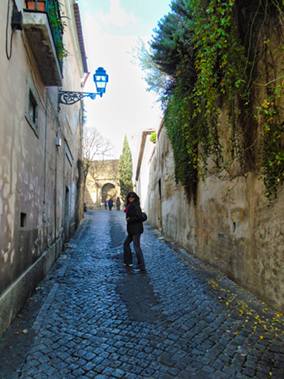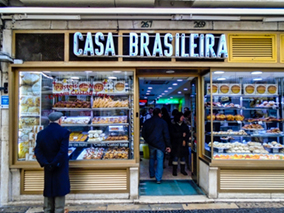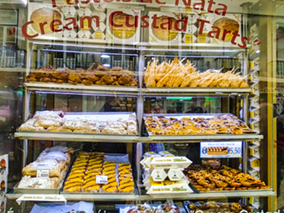

Portugal
This page is dedicated to Lisbon!
In short, Portugal is a southern European country on the Iberian Peninsula, bordering Spain. Its location on the Atlantic Ocean has influenced many aspects of its culture: salt cod and grilled sardines are national dishes, the Algarve’s beaches are a major destination and much of the nation’s architecture dates to the 1500s - 1800s, when Portugal had a powerful maritime empire.
Portugal was the world’s first maritime power and the birthplace to some of the world’s first explorers: Ferdinand Magellan, Vasco de Gama, Bartholomew Diaz and finally Alvares Cabral who discovered new land Brazil and claimed it for Portugal.
Today, Portuguese is an official language of nine other countries.

Portugal’s colonial empire spanned 600 years, the longest-lived of the modern European empires.
At its height, Portugal’s empire stretched across what are now 53 different countries. Brazil achieved independence in 1822, while all of Portugal’s African colonies were independent by the end of 1975. Portugal transferred its last colony, Macau, to China in 1999 after 442 years of occupation.
Lisbon
...isn’t only the capital city of Portugal, it’s also the largest city in the country. It’s the oldest city in Western Europe and one of the oldest cities in the world. It even predates other European capitals including: London, Paris and Rome by centuries.
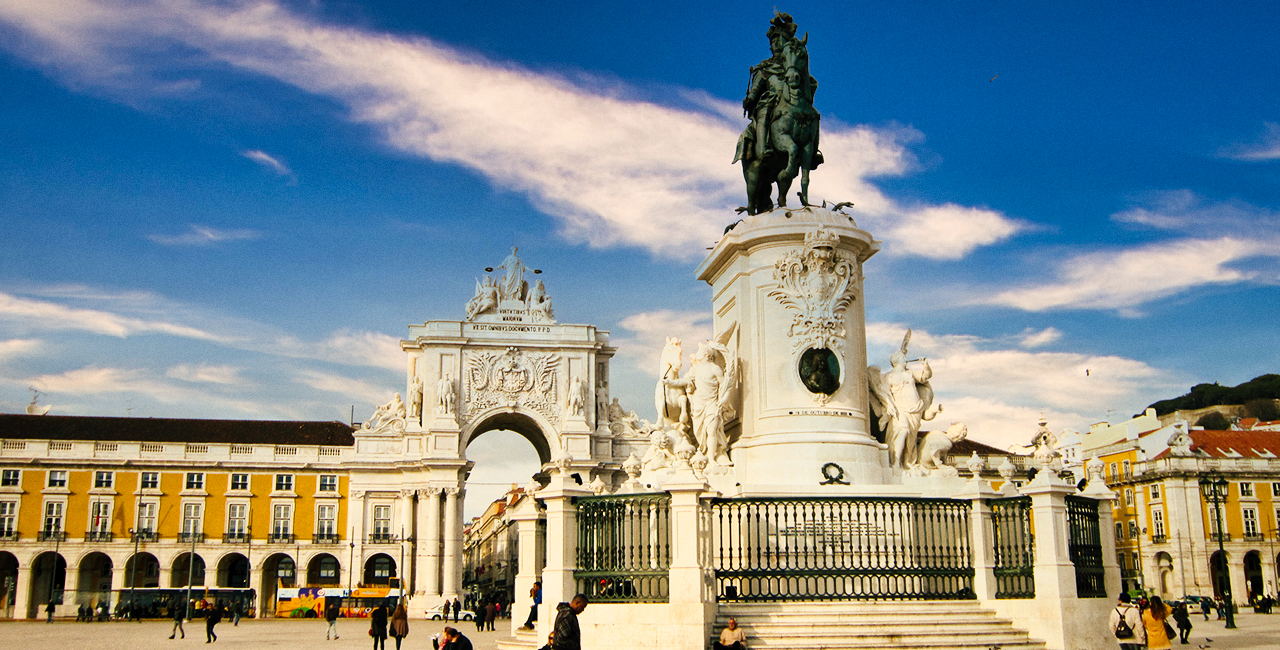
Lisbon has been a Portuguese city since 1147, but its history predates Portugal by a couple of thousand years. Archaeological finds dating back to 1200BC reveal that the Phoenicians had settlements across what is now Lisbon, meaning Lisbon has been continuously inhabited for over 3,000 years.
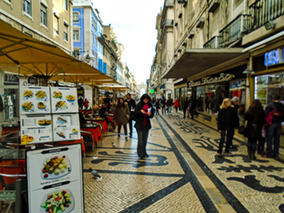

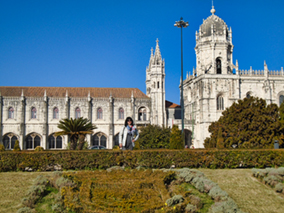
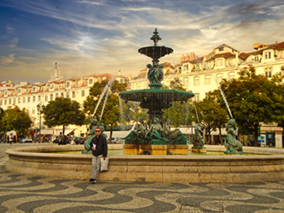
Lisbon’s Livraria Bertrand is the world’s oldest bookshop.
Founded in 1732, Livraria Bertrand was just a single bookshop. Sadly, this initial store was one of the many casualties of the Great Lisbon Earthquake in 1755. The earthquake scored 8.5 on the Richter scale and left around 60,000 people dead. Livraria Bertrand then set up shop on Rua Garrett in 1773, where it still stands. Nowadays, there are around 50 branches of Livraria Bertrand across Portugal.

Portuguese cobblestone is known as one of the symbols of the city of Lisbon - its black and white pattern stretches across the city and paves almost every pedestrian pathway in town.
The Portuguese Mestres Calceteiros (cobblestone masters) are known worldwide and solicited for their expertise to teach and promote this art across the globe. However, Lisbon is indeed the greatest place to admire their art.
Every European city has its own charms and beauties and Lisbon is not an any exception. It is a cosmopolitan city and perfectly set over several hills near the mouth of the river Tagus. As it is linked with sea famous navigators embarked from here in the 15th and 16th centuries to sail unknown waters and chart new lands, and the legacy of this golden Age of Discovery supports much of the city’s culture and heritage.
If you enjoy Lisbon like the locals do, at an easy and unhurried pace, you’ll quickly fall for its welcoming character and pleasing charm.
The following are some ideas of the best places to visit while you’re here.
Castelo de São Jorge: An Iconic Landmark
This is one of Lisbon’s most popular tourist destinations. Its impressive battlements, engaging museum and fascinating archaeological site combine to make the castle a rewarding experience for the whole family and especially kids. They will just love clambering over the sturdy walls and towers that encircle the grounds.
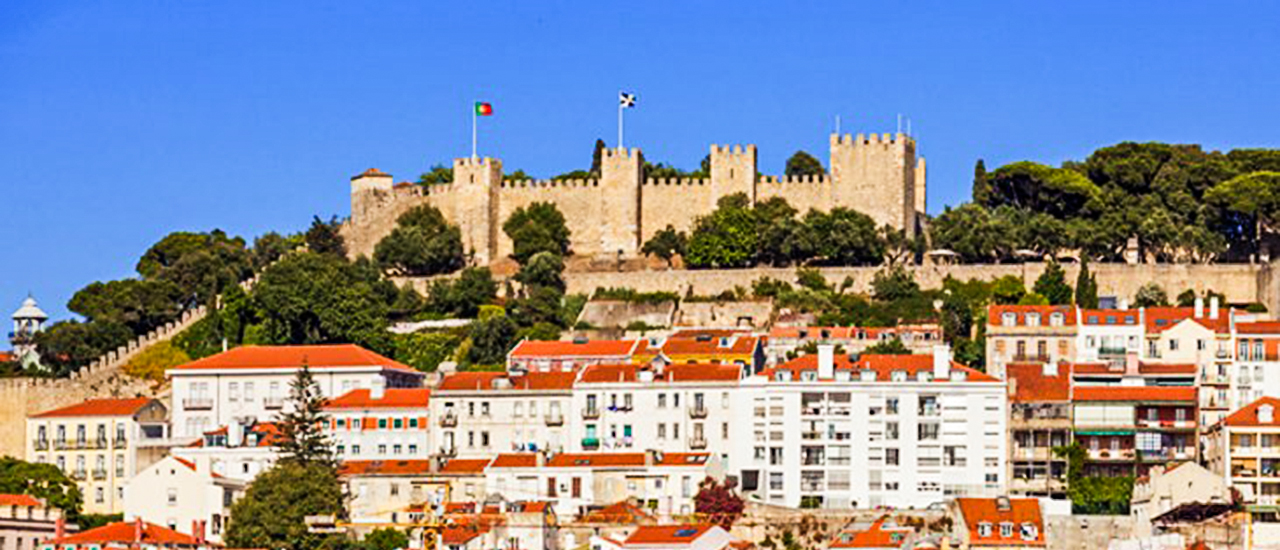
Human occupation of the castle hill dates to at least the 8th century BC while the first fortifications built date from the 1st century BC. The hill on which São Jorge Castle stands has played an important part in the history of Lisbon, having served as the location of fortifications occupied successively by Phoenicians, Carthaginians, Romans, and Moors, before its conquest by the Portuguese in the 1147 Siege of Lisbon.
Since the 12th century, the castle has variously served as a royal palace, a military barracks, home of the Torre do Tombo National Archive, and now as a national monument and museum.
Jerónimos Monastery
The Jerónimos Monastery is the most impressive symbol of Portugal's power and wealth during the Age of Discovery. King Manuel I built it in 1502 on the site of a hermitage founded by Prince Henry the Navigator, where Vasco da Gama and his crew spent their last night in Portugal in prayer before leaving for India.

Torre de Belém: A Historic Tower
The tower is located in the shallows near the mouth of the River Tagus as a symbol of Portugal’s extraordinary Age of Discovery during the 16th century. It represents the highpoint of decorative Manueline architecture. Its ornate façade is adorned with fanciful maritime motifs — all twisted rope and armillary spheres carved out of stone.
Set over various levels, the most interesting interior feature is the second-floor King’s Chamber, where the room opens onto a Renaissance loggia. The royal coat of arms of Manuel I is placed above the elegant arcades.
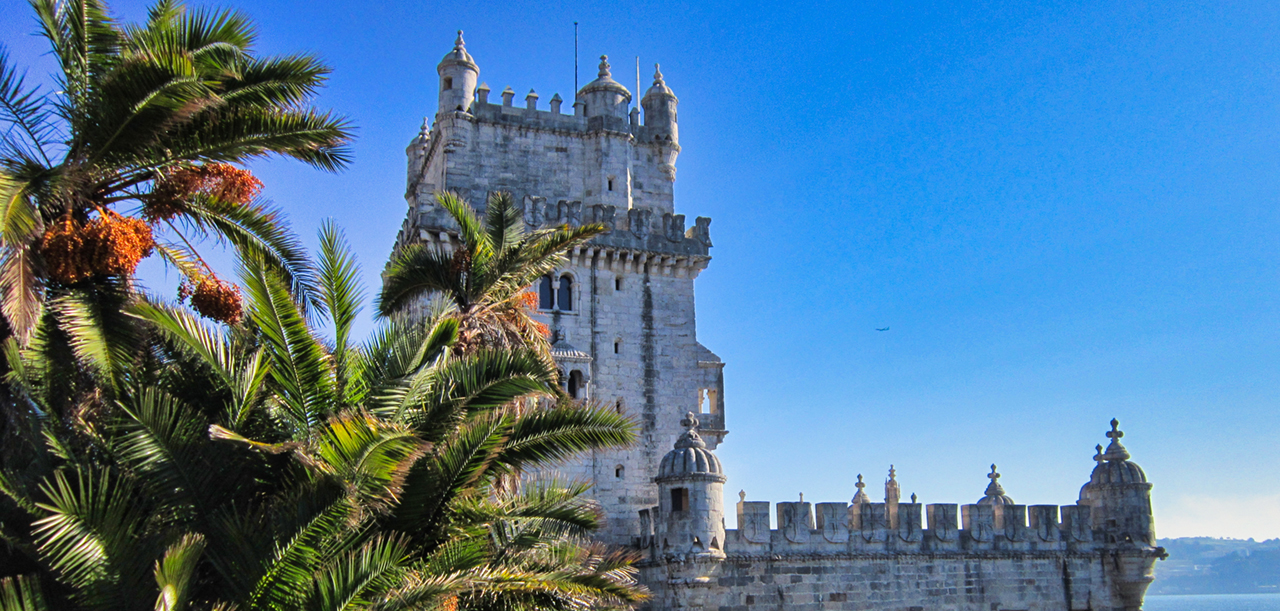
Padrão dos Descobrimentos: A Tribute to the Age of Discovery
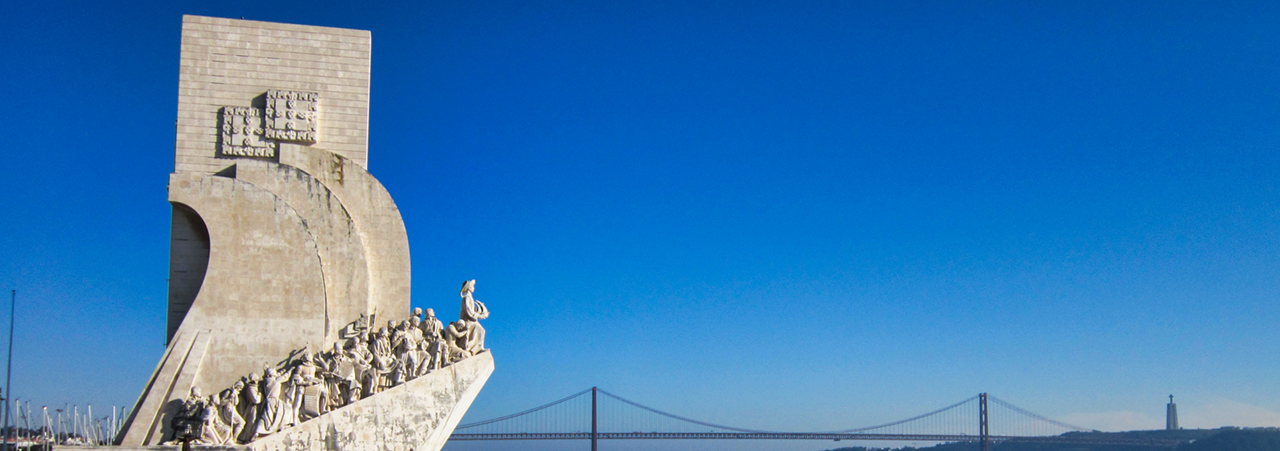
This is a bold and imposing monument situated on the banks of Tejo Estuary. The monument celebrates the 15 and 16th century Portuguese explorers and visionaries, who extablished Portugal as the most powerful seafaring nation of the era.
The design is deliberate. This landmark structure was built in 1960 to commemorate the 500th anniversary of the death of Henry the Navigator. It pays suitable tribute to all those actively involved in the development of the golden Age of Discovery by way of an amazing frieze of statues set along both sides of the monument of the most prominent personalities, figures like Vasco da Gama, Fernão de Magalhães, and Pedro Álves Cabral. Henry himself stands at the fore, caravel in hand.
Lisbon’s Old Quarter
The Alfama is Lisbon’s oldest quarter and ancient Arab district. This picturesque neighborhood is composed of a maze of narrow streets, winding alleyways, and steep flights of steps.
Lisbon’s old quarter offers many things to do. Besides the castle, there are several historic 17th century churches in the vicinity, as well as the city's impressive cathedral.
Lisbon has several miradouros or view points that show vistors terrific panoramas of the city and the river Tagus. The one of the most famous is “Miradouro das Portas do Sol”. The image down below was taken from there.
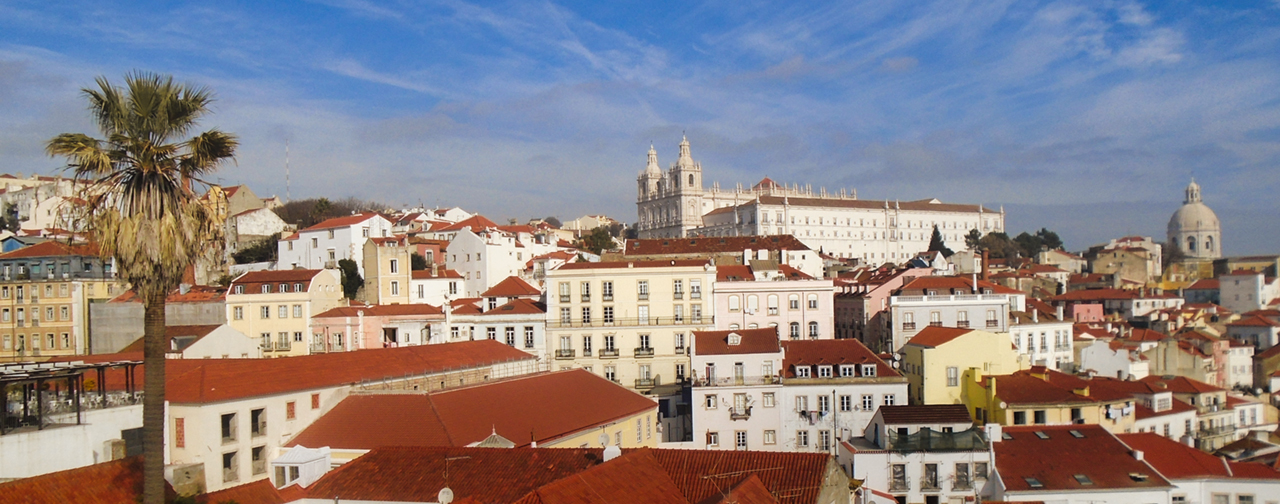
Alfama wakes up at night, when some of the city's most authentic cafés and restaurants open their doors to serve delicious traditional cuisine and plenty of bonhomie. The neighborhood is also home to traditional fado houses, where this unique Portuguese musical expression can be appreciated in rustic and romantic surroundings.
Trams are the ideal means to explore some of the most interesting spots of Lisbon’s historical and architectural heritage, or simply to tour the city. There are also 3 lifts and a tram, considered National Monuments that help you climb the hills of the city.
The number 28 tram in Lisbon connects Martim Moniz with Campo Ourique, and passes through the popular tourist districts of Graca, Alfama, Baixa and Estrela. For visitors, this is the classic Lisbon tram journey, riding in a quaint yellow tram as it rattles and screeches through the narrow streets of the city.
Praça do Comercio - Commercial centre of Lisbon
The Praça do Comercio, is a magnificent plaza in Lisbon. It is surrounded on three sides by distinctive yellow Pombaline styled buildings with the southern side facing out tover the Tejo Estuary.
The statue of King Joseph I stands at the centre of the plaza, while at the northern side is the the triumphant Rua Augusta Arch that leads into central Lisbon.

For the end....
Pastéis da nata by locals and tourists alike for thier flaky crust and creamy sweet egg filling, have put Lisbon on dessert lovers’ maps.
Even though they are made all over the country and found in nearly every pastry shop, only 3 people in the world know the original recipe.
